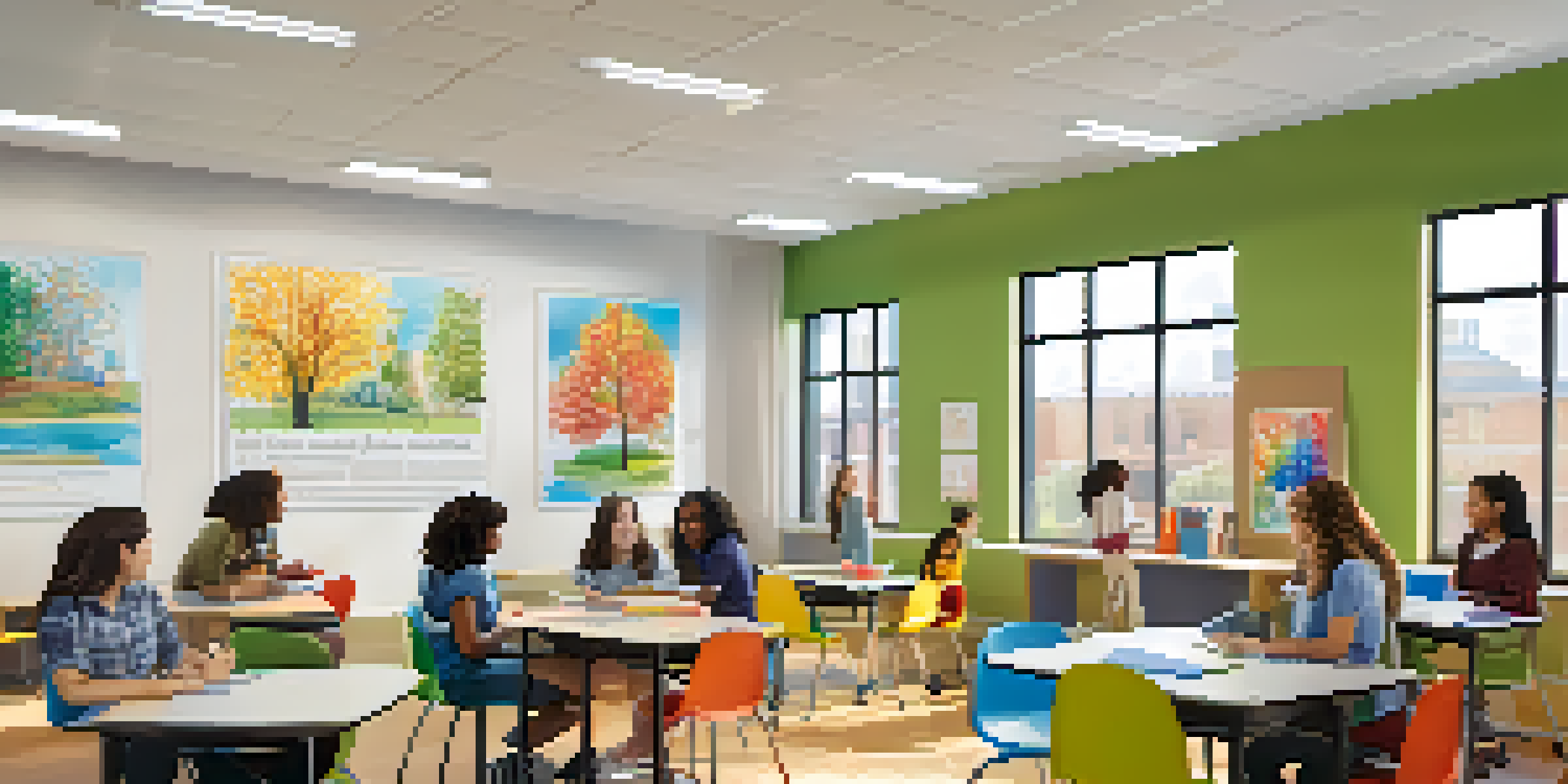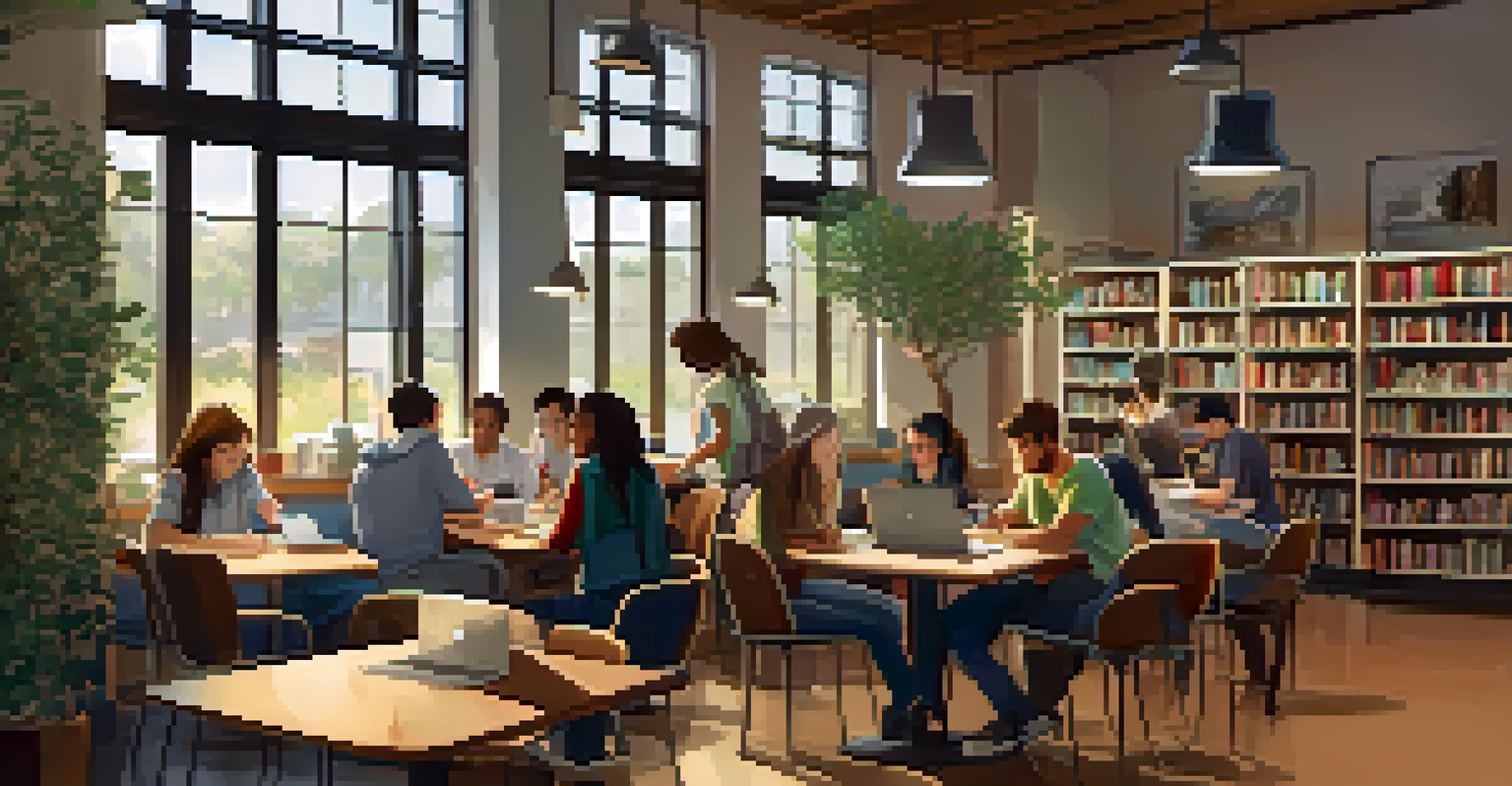The Connection Between Learning Environment and Brain Function

Understanding Learning Environments and Their Importance
Learning environments encompass the physical, social, and emotional settings where education occurs. These spaces can be classrooms, libraries, or even online platforms. Each of these environments can significantly influence a learner's ability to absorb and retain information, making them crucial to educational success.
The environment is the most important teacher.
Imagine a garden; plants thrive when they have the right soil, sunlight, and water. Similarly, students flourish in supportive learning environments that cater to their needs. A well-designed space can foster creativity, collaboration, and critical thinking, all essential components for effective learning.
When we talk about learning environments, we’re not just focusing on the four walls of a classroom. It includes the atmosphere created by teachers, peers, and the resources available. Understanding this broader perspective helps us appreciate how these elements work together to enhance brain function.
The Role of Physical Space in Learning Effectiveness
The layout and design of physical spaces play a crucial role in how well we learn. For example, an open layout with flexible seating can encourage collaboration and interaction among students. Conversely, a traditional classroom with fixed desks may hinder communication and group work.

Consider a cozy café versus a noisy, crowded space; the former can help you focus better. Similarly, well-lit, organized, and comfortable classrooms can enhance students' ability to concentrate and engage with the material. It's all about creating an environment that promotes learning.
Learning Environments Matter
The physical, social, and emotional settings significantly influence a learner's ability to absorb and retain information.
Moreover, incorporating elements like natural light and green spaces can positively affect mood and cognitive function. Studies show that students in well-designed classrooms perform better academically, underscoring the importance of thoughtful physical environments.
Social Interactions and Their Impact on Learning
Social dynamics within a learning environment significantly influence brain function. Positive interactions with peers and teachers can enhance motivation and engagement. When students feel supported and connected, they are more likely to participate actively and take risks in their learning.
Learning is a treasure that will follow its owner everywhere.
Think of a sports team; the synergy between players can elevate performance. Similarly, a collaborative classroom environment fosters a sense of belonging, which can lead to better academic outcomes. Students thrive when they know they have a network of support around them.
Conversely, negative social interactions can create stress and anxiety, impeding the learning process. Establishing a safe, inclusive environment is essential for nurturing healthy relationships and promoting optimal brain function.
Emotional Safety: A Key Component of Learning Environments
Emotional safety refers to the sense of security students feel in their learning spaces. When students believe they can express themselves without fear of judgment, their brains are more open to learning. This safe space encourages exploration and curiosity, both vital for effective education.
Picture a child who feels comfortable asking questions in class; they are more likely to engage and learn from their peers. Emotional safety fosters resilience and a growth mindset, allowing students to view challenges as opportunities rather than obstacles.
Social Interactions Enhance Learning
Positive relationships in learning environments boost motivation and engagement, leading to better academic outcomes.
Creating an emotionally safe environment requires intentional efforts from educators and institutions. Strategies such as promoting respect, understanding, and empathy can lead to improved brain function and academic success.
Technology's Role in Modern Learning Environments
In today's digital age, technology has become an integral part of learning environments. Tools like interactive whiteboards, tablets, and online resources can enhance student engagement and facilitate personalized learning experiences. These technological advancements can stimulate brain activity and foster deeper understanding.
However, it's essential to strike a balance. While technology can provide valuable resources, it can also be distracting if not used appropriately. Educators must find ways to integrate technology in ways that enhance, rather than hinder, the learning experience.
Moreover, technology can help create collaborative learning environments. For instance, online platforms allow students to work together on projects, regardless of location, promoting teamwork and collective problem-solving.
Cognitive Engagement and Its Relationship with Learning
Cognitive engagement refers to the mental effort students invest in their learning processes. A stimulating learning environment can enhance cognitive engagement by providing challenges that push students to think critically and creatively. This active involvement is crucial for effective brain function and knowledge retention.
Consider a puzzle; the more pieces you engage with, the clearer the picture becomes. Similarly, when students are challenged and encouraged to explore concepts deeply, they develop a more profound understanding of the subject matter.
Emotional Safety is Essential
Creating a space where students feel secure fosters exploration and curiosity, crucial for effective learning.
Teachers can promote cognitive engagement by incorporating hands-on activities, discussions, and problem-solving tasks. By doing so, they create an environment where students are not just passive recipients of information but active participants in their learning journeys.
The Future of Learning Environments and Brain Function
As we look ahead, the evolution of learning environments continues to be an exciting journey. Educators and researchers are constantly exploring innovative ways to create spaces that nurture brain function and enhance learning experiences. The integration of flexible designs, technology, and social-emotional learning strategies are becoming more prevalent.
Imagine classrooms that adapt to the needs of students in real-time, creating an immersive learning experience. Such advancements could revolutionize the way we educate, making learning more accessible and effective for all.

Ultimately, the connection between learning environments and brain function emphasizes the importance of holistic approaches to education. By prioritizing these aspects, we can foster an environment where every student has the opportunity to thrive.